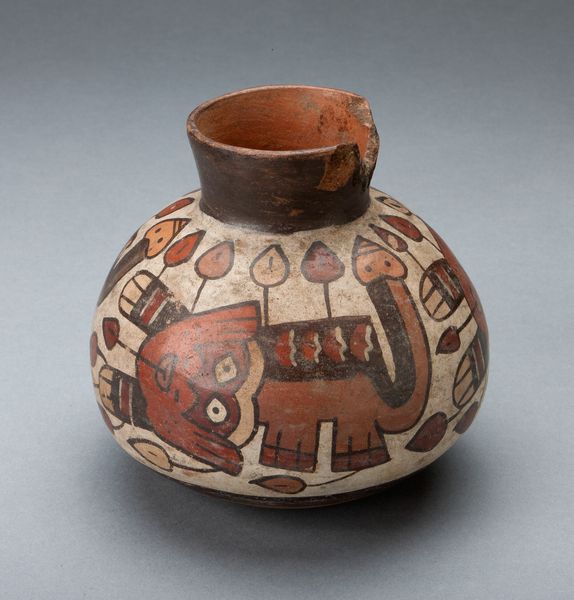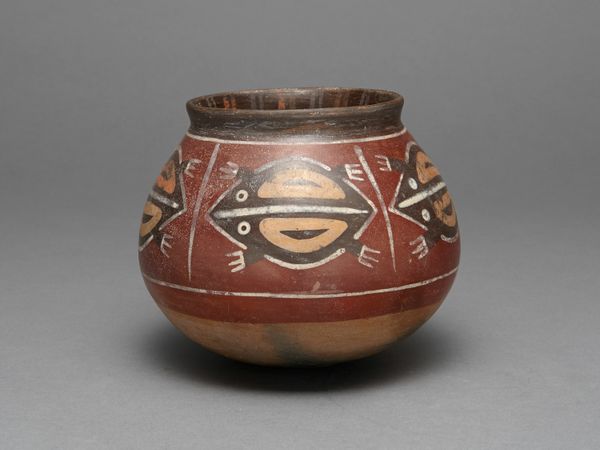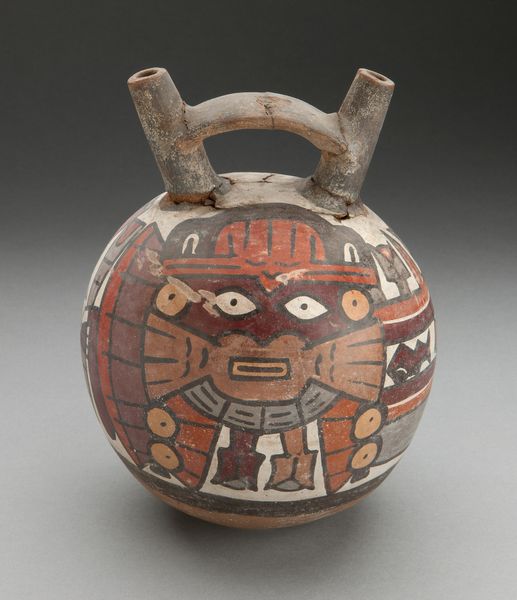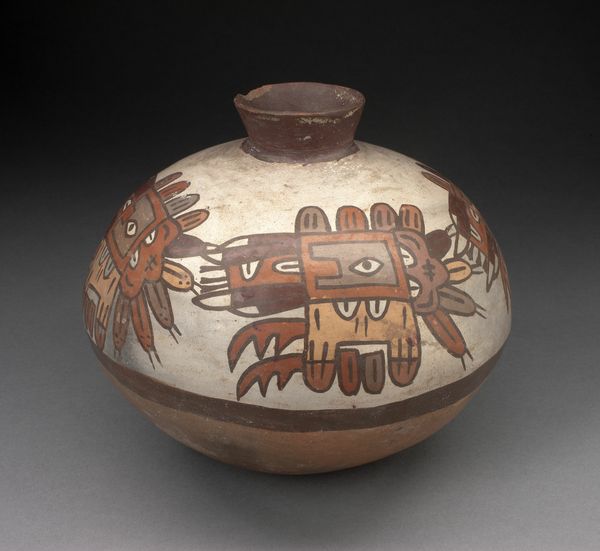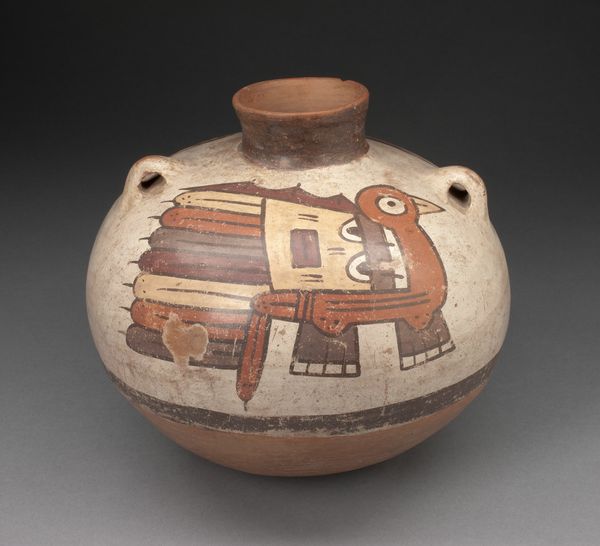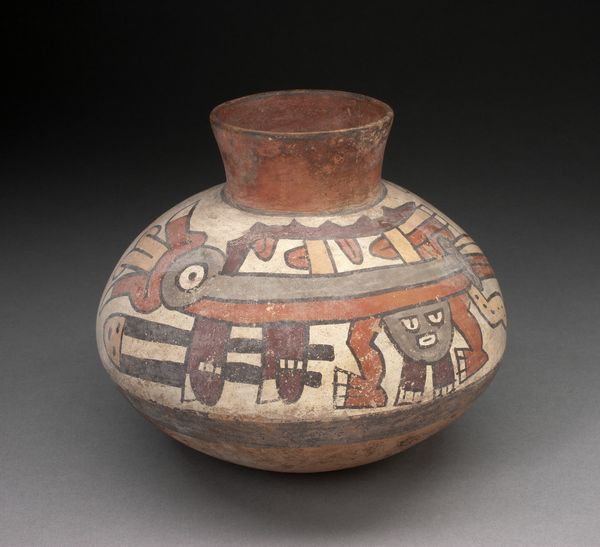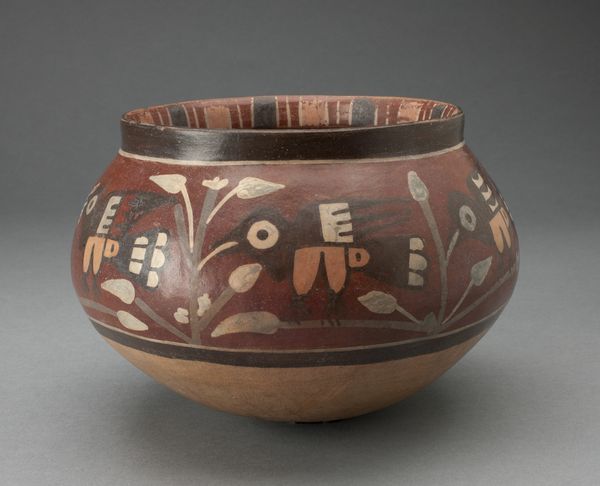
Collared Jar Depicting Costumed Ritual Performer Holding Checkerboard Staff c. 180 - 500
0:00
0:00
ceramic, inorganic-material
#
product studio photography
#
egg art
#
food packaging
#
war
#
ceramic
#
culinary art
#
vessel
#
food illustration
#
stoneware
#
wash background
#
inorganic-material
#
latin-american
#
ceramic
#
watercolour illustration
#
food photography
Dimensions: 12.7 × 14 cm (5 × 5 1/2 in.)
Copyright: Public Domain
Curator: Well, this unassuming ceramic jar holds a wealth of stories. It’s a Nazca piece, dating from about 180 to 500 AD. It's called "Collared Jar Depicting Costumed Ritual Performer Holding Checkerboard Staff." Editor: My first impression? Earthy. Like digging something profound from the soil itself. And a little menacing with that prominent feline face. It's not exactly comforting. Curator: The depiction is definitely intentional! Nazca pottery wasn't just functional. It served as a potent form of visual communication. Consider the performer here—likely a priest or shaman—in costume. He bears this peculiar checkerboard staff; its significance continues to be a matter of speculation, some suggesting an object of warfare or agriculture. Editor: Yes, warfare… because someone obviously went through so much labor to form and fire this beautiful thing—they were not simply thinking about putting flowers inside! You think of the time, the physical exertion involved in digging clay, processing it, forming the vessel, carefully painting and firing it just so. It’s a sophisticated chain of production. Curator: Exactly. Each of those stages tells us about their skill, resources, beliefs. It makes me think about intention and purpose... What meaning did this object hold in its original context? How did they perceive it? Was this intended as a functional everyday thing, a celebratory object or did they assign some symbolic weight to it. I just feel as though it’s radiating that power! Editor: You are right, the color palette alone! Earth tones – reds, browns, creams. Minerals ground and mixed, fired into permanence. It makes you wonder, did the materials themselves hold some sacred or symbolic power? Curator: Possibly, which adds to this object's mystery and allure. I love that pottery provides a lens through which we view life, rituals, and beliefs so unlike our own. Editor: Precisely! When you think about all the human hours embodied in the final fired pot – it transforms from artifact to document, or even a time capsule that speaks about the maker as well as its wider cultural contexts. It brings you much closer to past lived lives and shared understandings, no?
Comments
No comments
Be the first to comment and join the conversation on the ultimate creative platform.
